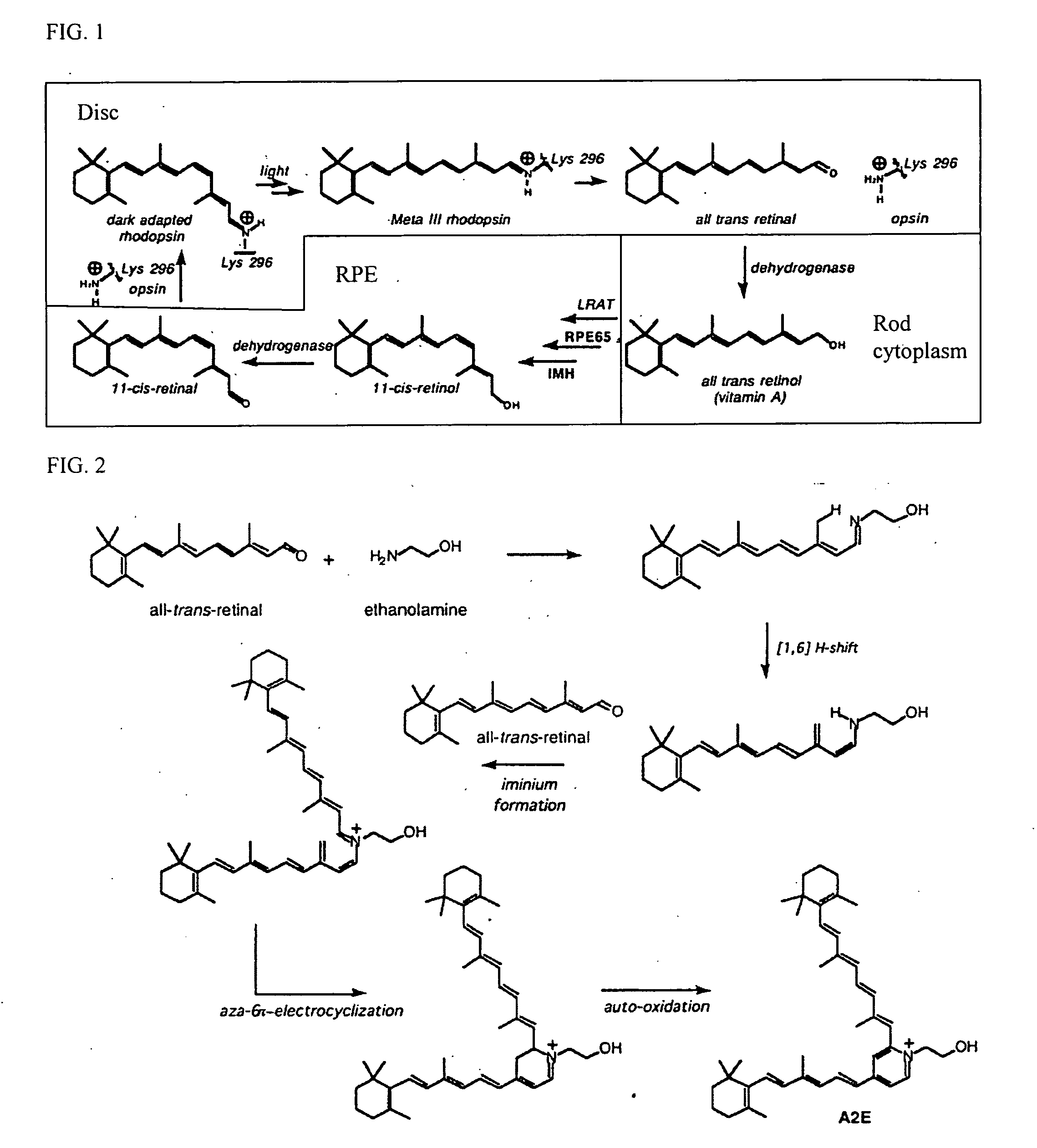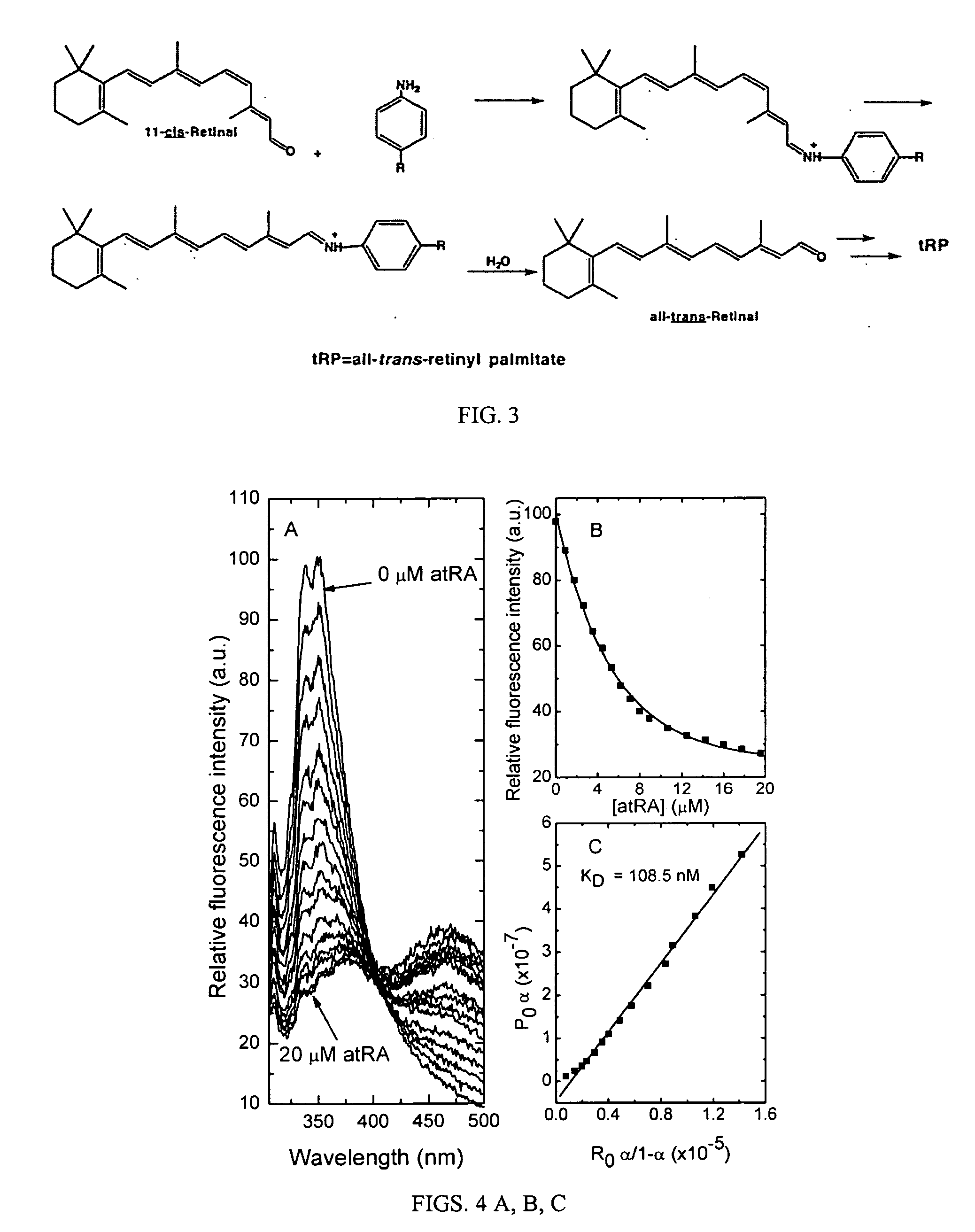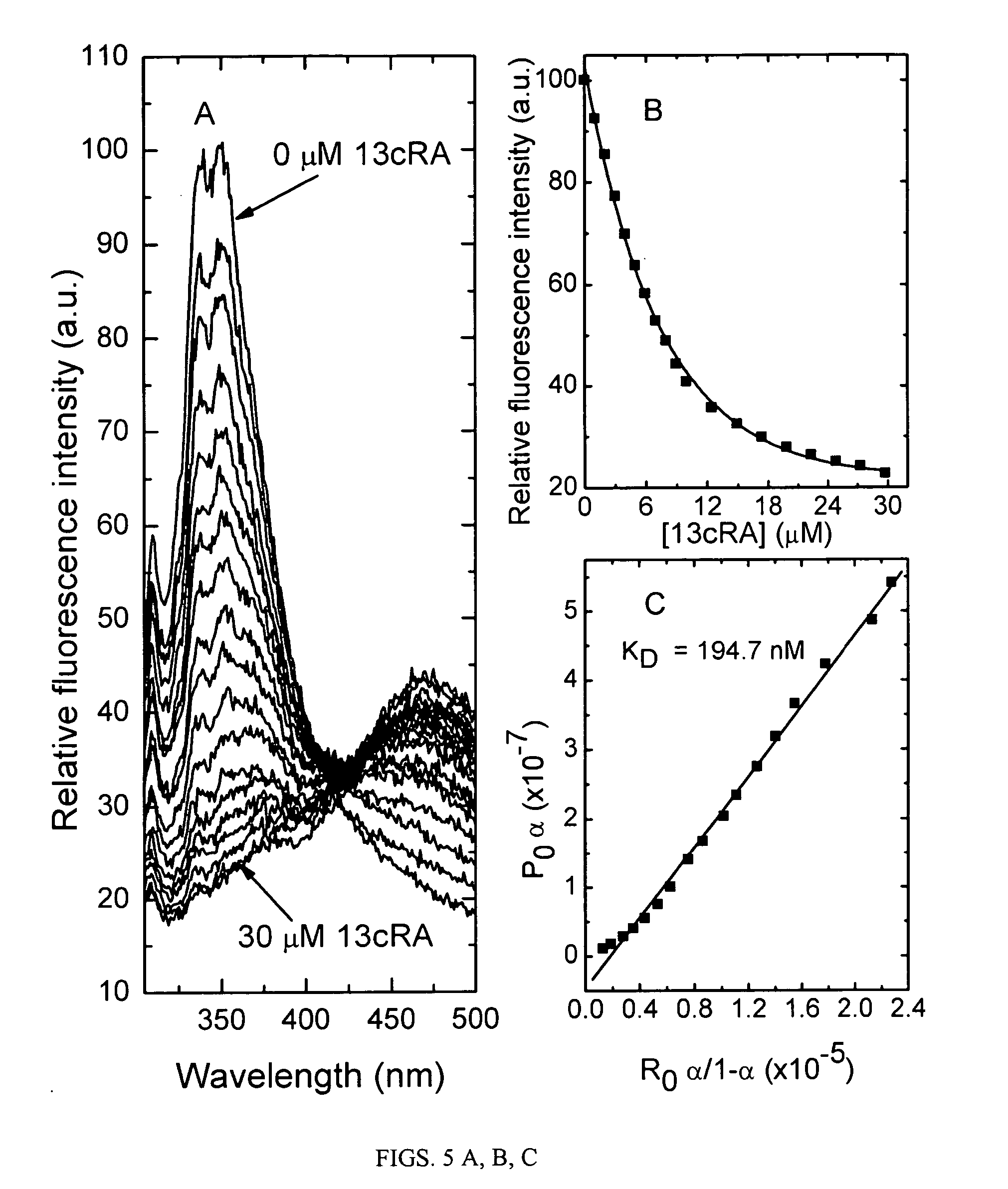Management of ophthalmologic disorders, including macular degeneration
a technology for ophthalmologic disorders and macular degeneration, applied in the direction of sense disorders, organic chemistry methods, drug compositions, etc., can solve the problems of affecting the phagocytosis of outer segments, age-related diseases of vision, and vision loss and blindness in ageing populations, so as to prevent or reduce accumulation of a2e in rod outer-segment discs, prevent binding, and reduce the effect of a2e production in discs
- Summary
- Abstract
- Description
- Claims
- Application Information
AI Technical Summary
Benefits of technology
Problems solved by technology
Method used
Image
Examples
example 1
[0929] Materials: Frozen bovine eyecups devoid of retinas were purchased from W. L. Lawson Co., Lincoln, Nebr. Ammonium bicarbonate, BSA, ethylenediaminetetraacetic acid (EDTA), guanidine HCl, imidazole, DEAE-Sepharose, phenyl-Sepharose CL-4B, all-trans-retinol, all-trans-retinyl palmitate, α-Cyano-4-hydroxycinnamic acid and Trizma® base were from Sigma-Aldrich. Dithiothreitol was from ICN Biomedicals Inc. 11-cis-Retinol and 11-cis-retinyl palmitate were synthesized by following the procedure described elsewhere (Shi et al., 1993). Anagrade™ CHAPS and dodecyl maltoside were from Anatrace. HPLC grade solvents were from Sigma-Aldrich Chemicals. Anti RPE65 (NFITKVNPETLETIK) antibody was obtained from Genmed Inc and anti-LRAT antibody was provided by Prof. Dean Bok (University of California at Los Angeles). rHRPE65 baculovirus was provided by Prof. Jian-Xin Ma (University of South Carolina). Hank's TNM-FH Insect medium was obtained from JRH Biosciences. sf21 cells were laborato...
example 2
Effect on Visual Cycle of Short-Circuiting Drugs in vivo
[1021] Mice were injected intraperitoneally (i.p.) with 50 mg / kg of the compounds listed prepared in 25 microliters DMSO. Positive control mice were injected with 13-cis-retinoic acid (ACCUTANE®) 50 mg / kg in 25 microliters DMSO. Negative control mice were injected with 25 microliters DMSO.
[1022] At predetermined times after administration, mice were exposed to sufficient light to cause complete bleaching of the visual cycle. Electroretinograms (ERG) were then performed in bright light or dim light, and the b-wave amplitude measured. The b-wave amplitude is assumed to be proportional to rhodopsin regeneration and thereby correlate with the functioning of the visual cycle (i.e., the higher the b-wave amplitude, the greater the functioning of the visual cycle).
A. 4-butyl-aniline and ethyl 3-aminobenzoate
[1023] 4-butyl-aniline and ethyl 3-aminobenzoate, were prepared as solutions in DMSO. 7 months old wild type (wt; C57BL / 6J×12...
example 3
Effect on Visual Cycle of Enzyme Inhibitors and RPE65 Antagonists in vivo
[1029] The experiments described in Example 2 were repeated additional compounds.
A. Retinyl palmityl ketone and retinyl decyl ketone
[1030]FIG. 19 shows an experiment with these compounds.
B. All-trans-retinyl palmityl ketone, all-trans-retinyl palmityl ether
[1031] FIGS. 20A-B and 21A-B show, respectively, two experiments with these compounds in dim (A) and bright (B) light.
C. Octyl farnesimide, palmityl farnestimide
[1032]FIG. 22A shows the results of an experiment in dim light using these compounds shortly after administration. FIG. 22B shows the results one week after administration.
D. Farnsyl octyl ketone, farnesyl decyl ketone
[1033] FIGS. 23A-C show experiments performed in dim light using these compounds. The data shown in FIG. 23B was obtained 3 days after administration. The data in FIG. 23C was obtained 8 days after administration.
E. Farnesyl palmityl ketone, farnesyl decyl ketone
[1034]FIG. 24 ...
PUM
| Property | Measurement | Unit |
|---|---|---|
| Fraction | aaaaa | aaaaa |
| Fraction | aaaaa | aaaaa |
| Fraction | aaaaa | aaaaa |
Abstract
Description
Claims
Application Information
 Login to View More
Login to View More - R&D
- Intellectual Property
- Life Sciences
- Materials
- Tech Scout
- Unparalleled Data Quality
- Higher Quality Content
- 60% Fewer Hallucinations
Browse by: Latest US Patents, China's latest patents, Technical Efficacy Thesaurus, Application Domain, Technology Topic, Popular Technical Reports.
© 2025 PatSnap. All rights reserved.Legal|Privacy policy|Modern Slavery Act Transparency Statement|Sitemap|About US| Contact US: help@patsnap.com



